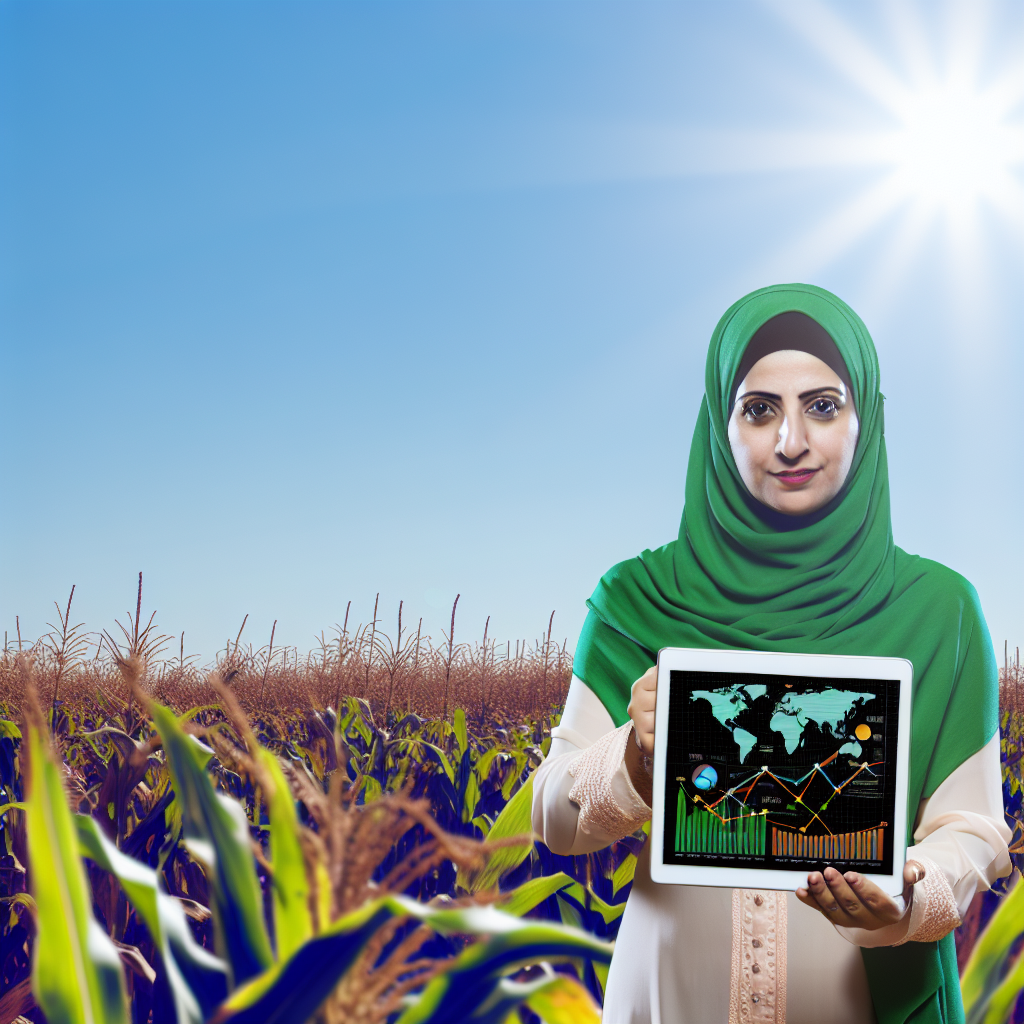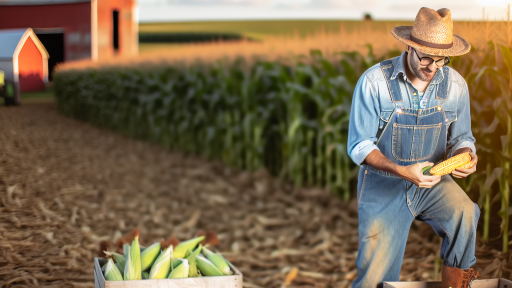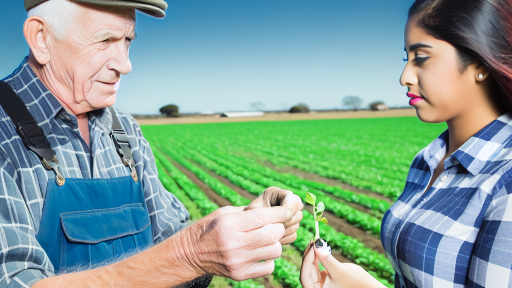Overview of Global Agricultural Market Trends in 2023
The global agricultural market is undergoing significant changes in 2023.
Various factors drive these transformations, including climate change and technology advancements.
Farmers need to adapt to these evolving trends to remain competitive.
Climate Impact on Agriculture
Climate change significantly affects crop yields and agricultural practices.
Extreme weather events disrupt planting and harvesting schedules.
Farmers must implement resilient strategies to combat these challenges.
Additionally, sustainable farming practices can mitigate climate impacts.
Technological Advancements
Technology plays a pivotal role in modern agriculture.
Precision farming techniques enhance efficiency and productivity.
Farmers increasingly adopt drones and IoT devices for real-time monitoring.
Moreover, data analytics improve decision-making processes.
Shifting Consumer Preferences
Consumer preferences are evolving towards healthier and sustainable food options.
This shift affects the demand for organic and locally sourced products.
Farmers need to understand these trends to meet market demands.
Global Trade Dynamics
Global trade agreements influence agricultural markets significantly in 2023.
Transform Your Agribusiness
Unlock your farm's potential with expert advice tailored to your needs. Get actionable steps that drive real results.
Get StartedShifts in tariffs and trade policies affect crop prices and availability.
Farmers must remain informed about international market conditions.
Staying adaptable to trade changes can optimize profitability.
Investment in Sustainable Practices
Investing in sustainable agricultural practices is increasingly essential.
Farmers are focusing on reducing waste and improving resource efficiency.
Such initiatives can enhance both environmental and economic resilience.
Furthermore, sustainability can attract eco-conscious consumers.
Impact of Climate Change on Farming Practices and Market Demands
Changing Weather Patterns
Climate change significantly alters weather patterns across the globe.
Farmers face unpredictable rainfall and temperature fluctuations.
This unpredictability affects crop yields and planning.
Soil Quality and Health
Higher temperatures can degrade soil quality over time.
Extreme weather events erode vital topsoil layers.
As a result, soil health declines, reducing productivity.
Shift in Crop Varieties
Farmers increasingly adapt to changing climate conditions.
This adaptation includes growing more drought-resistant crops.
For example, quinoa and sorghum are gaining popularity.
Market Demands and Consumer Preferences
Consumers seek sustainable and environmentally friendly products.
As a result, organic farming practices are on the rise.
Farmers must respond to this shift in market demands.
Technological Innovations
Farmers are leveraging technology to address climate challenges.
This includes precision agriculture and data analytics.
Such innovations enhance decision-making and efficiency.
Government Policies and Support
Governments are implementing policies to combat climate change.
Subsidies for sustainable practices encourage farmers to adapt.
Showcase Your Farming Business
Publish your professional farming services profile on our blog for a one-time fee of $200 and reach a dedicated audience of farmers and agribusiness owners.
Publish Your ProfileAdditionally, funding for research aids in developing resilient crops.
Collaboration and Knowledge Sharing
Farmers benefit from collaborating with research institutions.
Sharing knowledge about best practices enhances resilience.
Networking among farmers builds strong support systems.
Emerging Technologies Shaping the Future of Agriculture
Smart Farming Tools
Smart farming technologies revolutionize traditional agricultural practices.
Farmers now utilize IoT devices for real-time monitoring of crops.
This technology provides accurate data about soil health and moisture levels.
Consequently, farmers can make informed decisions that boost yields.
Data Analytics for Precision Farming
Data analytics enables precision farming with targeted resource application.
Farmers analyze historical data to optimize planting schedules.
They also assess weather patterns to predict crop performance.
This approach minimizes waste and maximizes productivity.
Agricultural Robotics
Robots assist in various farming tasks to enhance efficiency.
For example, automated harvesters can pick fruits with precision.
Additionally, drones survey fields to provide aerial imagery.
This imagery allows for quick identification of pest infestations.
Sustainable Practices Through Technology
Emerging technologies promote sustainable agricultural practices.
Farmers can now utilize solar-powered irrigation systems.
This innovation reduces reliance on non-renewable energy sources.
Moreover, bioengineering techniques create crops resistant to pests.
Blockchain for Supply Chain Transparency
Blockchain technology enhances transparency in the agricultural supply chain.
It allows consumers to trace the origin of their food easily.
By ensuring quality and safety, farmers can build stronger reputations.
Furthermore, it facilitates fair trade practices among producers.
See Related Content: Farm Management Software Enhancing Operations
Key International Trade Agreements Affecting Agricultural Exports and Imports
Overview of Trade Agreements
Trade agreements shape the agricultural landscape significantly.
They determine tariffs and trade barriers across nations.
Furthermore, they facilitate trade by creating a more predictable environment for exporters.
Major International Agreements
Numerous key agreements influence agricultural exports and imports.
The North American Free Trade Agreement (NAFTA) promotes trade between Canada, Mexico, and the United States.
Similarly, the European Union’s Common Agricultural Policy supports farmers through subsidies and price controls.
Another significant agreement is the Comprehensive and Progressive Agreement for Trans-Pacific Partnership (CPTPP).
This agreement opens markets for numerous agricultural products among member countries.
Tariff Implications
Trade agreements often include provisions for reducing tariffs.
Lower tariffs can increase a country’s competitive edge in international markets.
This can lead to increased exports for farmers in participating countries.
Consequently, some imported goods may become cheaper for consumers.
Impact on Agricultural Policies
International trade agreements shape domestic agricultural policies.
Countries may adjust policies to align with their trade commitments.
This alignment can enhance market access for local farmers.
Showcase Your Farming Business
Publish your professional farming services profile on our blog for a one-time fee of $200 and reach a dedicated audience of farmers and agribusiness owners.
Publish Your ProfileHowever, it may also challenge industries that cannot compete globally.
Future Developments
The landscape of international trade is continuously evolving.
New agreements and amendments to existing ones will emerge.
Farmers should monitor these changes closely to stay informed.
This awareness helps them adapt strategies to maximize export opportunities.
In addition, they can mitigate risks associated with import competition.
See Related Content: Enhancing Farm Visibility with Strategic Branding
Shifts in Consumer Preferences Towards Sustainable and Organic Products
The Rise of Sustainability
Consumers increasingly prefer sustainably produced goods.
This trend reflects growing awareness of environmental issues.
Farmers can benefit from this shift by adapting their practices.
By prioritizing sustainability, they appeal to eco-conscious buyers.
Organic Products Gain Popularity
Organic products are experiencing exponential growth in demand.
Many consumers believe organic means healthier and tastier options.
This belief drives more farmers to transition to organic farming.
Organic certification can provide a competitive edge in the marketplace.
Health-Conscious Consumption
Health trends significantly influence consumer behavior today.
People increasingly seek foods with natural ingredients.
The popularity of plant-based diets highlights this shift.
Farmers can cater to this trend by diversifying their crops.
Transparency and Ethical Sourcing
Consumers demand transparency in the food supply chain.
They prefer brands that openly share sourcing information.
Farmers should communicate their practices to build trust.
Providing details about production can enhance product appeal.
Technology and Consumer Engagement
Technology plays a critical role in connecting farmers to consumers.
Social media platforms enable farmers to showcase their products.
Engaging storytelling can foster a strong consumer relationship.
Farmers can utilize these channels to highlight sustainability efforts.
Find Out More: Meridian Analytical Labs: Premier Water Testing & Analysis in Wichita, KS

The Influence of Global Economic Conditions on Farming Profitability
Understanding Global Economic Trends
Global economic conditions can significantly impact farming profitability.
Farmers must stay informed about current market trends.
Economic indicators, such as inflation and currency exchange rates, also play critical roles.
For instance, fluctuations in commodity prices directly affect farmers’ income.
Additionally, supply chain disruptions can lead to increased costs.
Impact of Trade Policies
Trade agreements shape the market landscape for agricultural products.
For example, tariffs can make imported goods more expensive.
Conversely, favorable trade deals can open new market opportunities.
Farmers should monitor international trade discussions closely.
Such policies dictate which crops become more lucrative.
The Role of Currency Values
The value of local currency against the dollar impacts profitability.
A stronger local currency can make exports less competitive.
Showcase Your Farming Business
Publish your professional farming services profile on our blog for a one-time fee of $200 and reach a dedicated audience of farmers and agribusiness owners.
Publish Your ProfileIn contrast, a weaker currency boosts export attractiveness.
Farmers must adapt their strategies based on currency fluctuations.
Proactive planning can mitigate risks associated with exchange rates.
Technological Innovations and Market Access
Technology continually transforms farming practices.
Innovations can enhance efficiency and reduce costs.
Moreover, digital platforms offer farmers broader market access.
Connecting directly with consumers can improve profit margins.
Consequently, farmers should embrace modern technology.
Shifts in Consumer Behavior
Consumer preferences influence crop choices and farming practices.
A growing demand for organic produce has changed market dynamics.
Farmers must adapt to these changing preferences quickly.
Additionally, sustainability is becoming an essential consideration.
Meeting consumer expectations can enhance profitability.
Gain More Insights: Secure Payment Solutions for Online Farm Sales
Regional Market Insights
Trends in North America
North America experiences a growing demand for organic produce.
Farmers are increasingly focusing on sustainable practices.
Technology adoption, such as precision farming, is on the rise.
Consumer awareness about food safety drives market trends.
Urban agriculture initiatives are gaining momentum in cities.
Trends in Europe
European farmers face strict environmental regulations.
There is a strong push towards agroecology and biodiversity.
Short supply chains are becoming more popular among consumers.
Vertical farming and innovative solutions are thriving.
The demand for plant-based products continues to rise significantly.
Trends in Asia
Asia’s agricultural sector is rapidly modernizing.
Countries are investing heavily in agricultural technology.
Rice and other staple crops remain vital to food security.
Urbanization leads to a shift in food production practices.
Farmers are connecting with consumers through e-commerce platforms.
Strategies for Farmers to Adapt to Changing Market Dynamics
Understanding Market Trends
Acknowledge the significance of staying informed about market trends.
Farmers must understand local and global market changes.
Regular research helps tailor strategies effectively.
Diversifying Crops
Diversification reduces risk by spreading investment across multiple crops.
Consider growing high-demand crops like organic vegetables.
Investigate niche markets that cater to consumer trends.
Furthermore, crop rotation enhances soil health and yields.
Utilizing Technology
Embrace technology to improve efficiency and productivity.
Invest in precision farming tools for data-driven decisions.
This includes soil sensors and drones for monitoring crops.
Additionally, online marketplaces facilitate connection with consumers.
Showcase Your Farming Business
Publish your professional farming services profile on our blog for a one-time fee of $200 and reach a dedicated audience of farmers and agribusiness owners.
Publish Your ProfileBuilding Strong Supply Chains
Establish relationships with reliable suppliers and distributors.
Consider local partnerships to strengthen community ties.
Efficient logistics can minimize costs and enhance delivery speeds.
Moreover, strong networks allow for better market access.
Engaging in Sustainable Practices
Sustainable farming appeals to the eco-conscious consumer base.
Implement practices that promote environmental stewardship.
This may include organic farming and reducing chemical use.
Additionally, sustainability can lead to cost savings long-term.
Continuous Education and Training
Invest in ongoing education to enhance farming skills.
Participating in workshops keeps farmers updated on best practices.
Moreover, online courses offer flexibility for busy schedules.
Networking with other farmers also provides valuable insights.
Adapting to Regulatory Changes
Stay informed about agricultural policies and regulations.
Changes can impact production, funding, and environmental practices.
Join professional associations for timely information and support.
Furthermore, advocacy helps shape favorable agricultural policies.
Additional Resources
Agriculture Overview: Development news, research, data | World Bank




